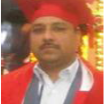International Journal of Modern Education and Computer Science (IJMECS)
IJMECS Vol. 8, No. 7, 8 Jul. 2016
Cover page and Table of Contents: PDF (size: 1203KB)
Modular Design of 2n:1 Quantum Dot Cellular Automata Multiplexers and its Application, via Clock Zone based Crossover
Full Text (PDF, 1203KB), PP.41-52
Views: 0 Downloads: 0
Author(s)
Index Terms
Quantum Dot Cellular Automata, Majority Gate, Multiplexer, Parallel Memory, Kink Energy
Abstract
Quantum-Dot Cellular Automata (QCA) is a radical technology, which works at Nanoscale. Due to its numerous advantages over the conventional CMOS-based digital circuits, researchers are now concentrating more on designing digital circuits using this technology. Researchers have reported various findings in this field till now. In this paper, a modular 2:1 Multiplexer has been designed followed by its application in the designing of 1-bit parallel memory. A 4:1 MUX is designed using cascading of two 2:1 multiplexers. This paper also incorporates a comparative analysis of the proposed circuits with some previous designs. This comparison indicates that the designed Multiplexer is showing a considerable reduction in cell count as well as in the area. Here the design and simulation of the circuits are done using QCA Designer Ver. 1.40. Power dissipation simulation analysis of the designed 4:1 multiplexer is also done using QCA Pro tool.
Cite This Paper
Sonali Singh, Shraddha Pandey, Subodh Wairya, "Modular Design of 2n:1 Quantum Dot Cellular Automata Multiplexers and its Application, via Clock Zone based Crossover", International Journal of Modern Education and Computer Science(IJMECS), Vol.8, No.7, pp.41-52, 2016. DOI:10.5815/ijmecs.2016.07.05
Reference
[1]J Haung, and F Lombardi,“Design and test of digital circuits by quantum-dot cellular,” Boston, MA (2008).
[2]Kim K, Wu K, and Karri R,“The robust QCA adder designs using composable QCA building blocks,” IEEE Trans Comput-Aid Design Integrated Circuit System, Vol. 26, pp.176–83, 2007.
[3]VA Mardiris and IG Karafyllidis,“Design and simulation of modular〖 2〗^n QCA multiplexer,” International Journal of Circuit Theory and Applications, Vol. 38, Issue 8, pp. 771-785, September 2010.
[4]S. Hashemi, M. R. Azghadi and A Zakerolhosseini, “A Novel QCA multiplexer design”. Telecommunications, 2008. IST 2008. International Symposium on,” pp. 692–695,2008. http://dx.doi.org/10.1109/ISTEL.2008.4651389.
[5]A Roohi, H Khademolhosseini,S Sayedsalehi, and K Navi, “A novel architecture for quantum-dot cellular automata multiplexer,” International Journal of Computer Science Vol. 8, Issue 6, 2011.
[6]Bibhash Sen, Mrinal Goswami, Subhra Mazumdar, and Biplab K Sikdar, “Towards the modular design of reliable quantum- dot cellular automata logic circuit multiplexers.” Microelectronics Journal of Computers & Electrical Engineering, Vol. 45, pp. 42–54, 2015.
[7]A. Chaudhary et al. “Fabricatable interconnect and molecular QCA circuits,” IEEE Transactions on Computer-Aided Design of Integrated Circuits and Systems, Vol.26, Issue 11, pp. 1978 – 1991, Nov. 2007.
[8]R. Sabbaghi, Nadooshan and, M. Kianpour. “A novel QCA implementation of MUX-based universal shift registers,” Journal of Computational Electronics, Vol. 13, Issue 1, pp. 198-210, March 2014.
[9]B. Sen, M.Dutta, D.Sara,B Sikdar,“An efficient multiplexer in quantum-dot cellular automata”, Progress in VLSI Design and Test. Lecture Notes in Computer Science, Berlin Heidelberg: Springer, vol. 7373,pp.350–351,2012.doi.org/10.1007/978-3-642-31494-0_40.
[10]C.S. Lent, P.D. Tougaw, and W. Porod, “Bistable saturation in coupled quantum dots for quantum cellular automata”, Applied Physics Letter, Vol.62, pp.714-716, 1993.
[11]C. S Lent et al., “Quantum cellular automata,” Nanotechnology, Vol. 4, No. 1, pp. 49-57,1993.
[12]P. D Tougaw. and C. S. Lent, “Logical devices Implemented using Quantum Cellular Automata,” Journal of Applied Physics, Vol. 75, No. 3, Feb 1994.
[13]K. Walus and G.A. Jullien, “Design tools for an emerging SoC technology: quantum-dot cellular automata”. Proceedings of the IEEE, Vol. 94, Issue 6 pp.1225–1244, June2006.
[14]K Sridharan and Vikram Pudi.“ Design of Arithmetic Circuits in Quantum Dot Cellular Automata Nanotechnology,” Publisher : Springer International, Year:2015
[15]C.S. Lent, P.D. Tougaw, “A device architecture for computing with quantum dots”. Proceedings IEEE, Vol. 85, Issue 4, pp.541–557,1997.
[16]D. Abedi, G. Jaberipur, and M. Sangsefidi, “Coplanar Full Adder in Quantum-Dot Cellular Automata via Clock-Zone Based Crossover,”IEEE Transactions on Nanotechnology, Vol. 14, Issue 3, pp. 497 - 504 doi:10.1109/TANO.2015.2409117
[17]M. SangSefidi, D. Abedi, and M. Moradian. “Design a Collector with More Reliability against Defects during Manufacturing in Nanometer Technology, QCA." Journal of Software Engineering and Applications, Vol. 6, Issue 6, pp. 304-312, 2013.
[18]S.-H. Shin, J.-C. Jeon, and K.-Y. Yoo, “Wire-crossing technique on quantum-dot cellular automata,” In NGCIT2013, the 2nd International Conference on Next Generation Computer and Information Technology, Vol. 27, pp. 52–57,2013.
[19]D. Agrawal and B. Ghosh, “Quantum Dot Cellular Automata Memories”, International Journal of Computer Applications, Vol. 46, Issue. 5, 2012.
[20]Mili Ghosh, Debarka Mukhopadhyay, and Paramartha Dutta. “A Novel Parallel Memory Design using 2 Dot 1Electron QCA,” 2015 IEEE 2nd International Conference on Recent Trends in Information Systems (ReTIS), Kolkata, India.
[21]Sanjukta Bhanja, and Sudeep Sarkar. “Probabilistic Modeling of QCA Circuits Using Bayesian Networks,” IEEE Transactions on Nanotechnology, Vol. 5, Issue 6, pp. 657 - 670, DOI: 10.1109/TNANO.2006.883474
[23]Saket Srivastava, and Sanjukta Bhanja. “Hierarchical Probabilistic Macromodeling for QCA Circuits,” IEEE Transactions on Computers, Vol.56, pp. 174-190,2007.
[23]Saket Srivastava, Sudeep Sarkar, and Sanjukta Bhana, “Estimation of Upper Bound of Power Dissipation in QCA Circuits,” IEEE Transactions on Nanotechnology, 2008, Vol. 8, Issue: 1 pp. 116 – 127, DOI: 10.1109/TNANO.2008.2005408.


